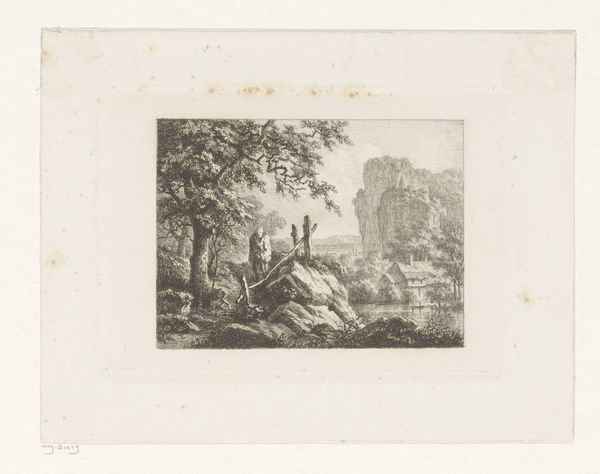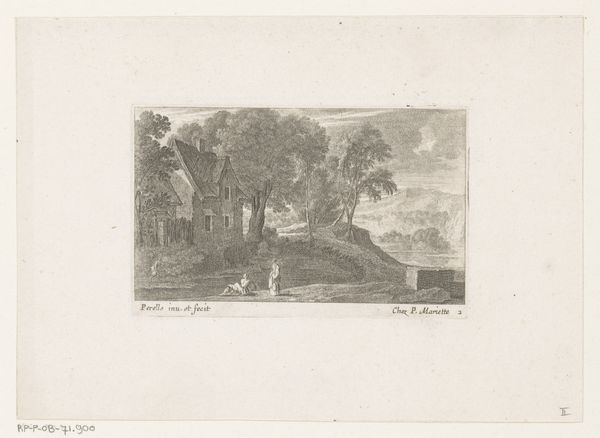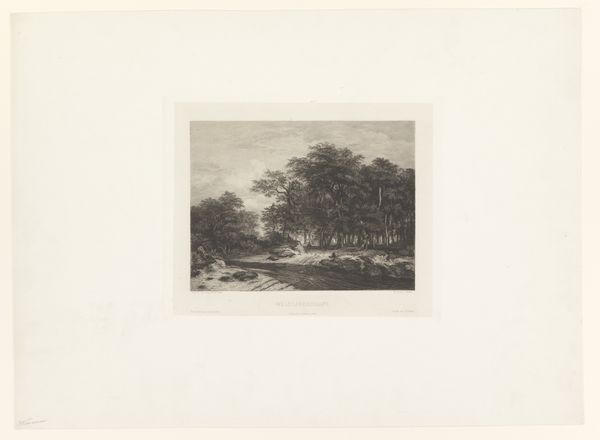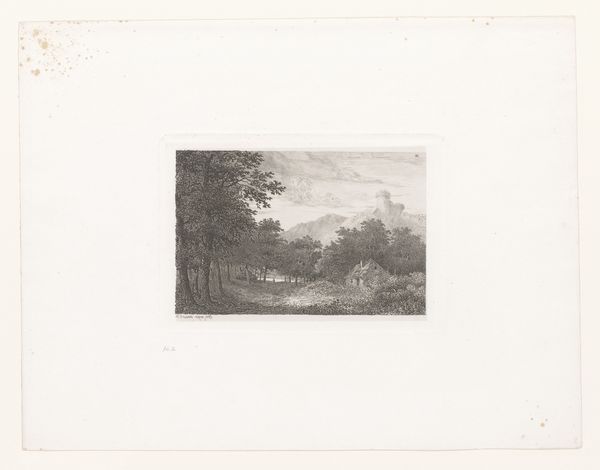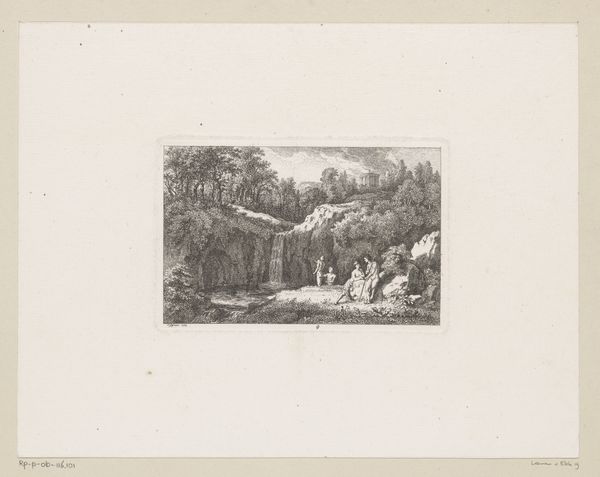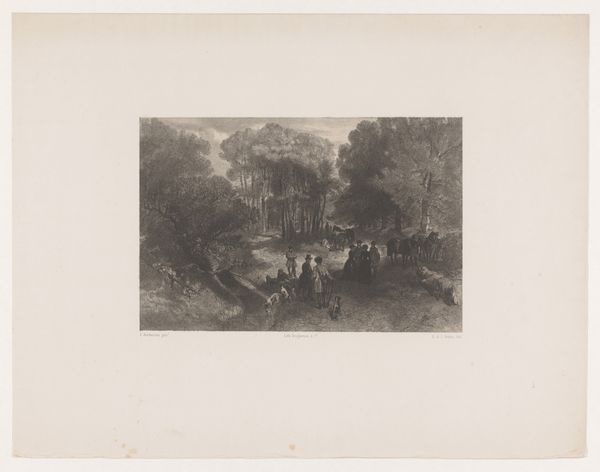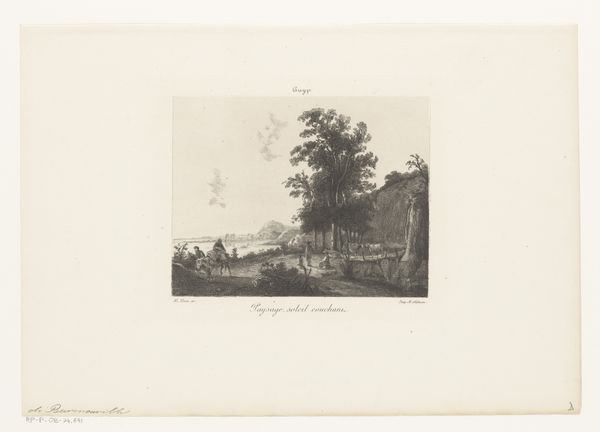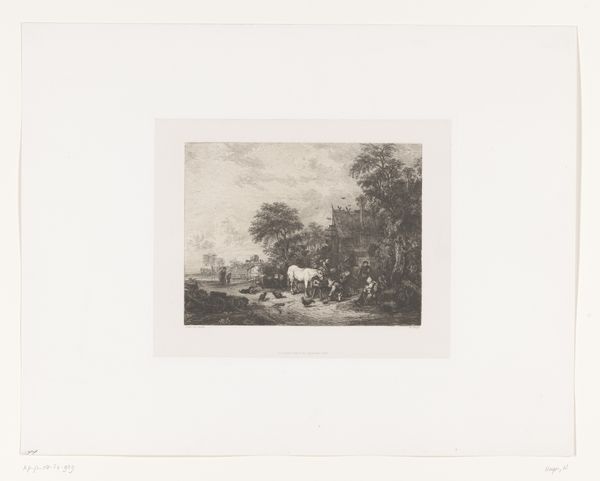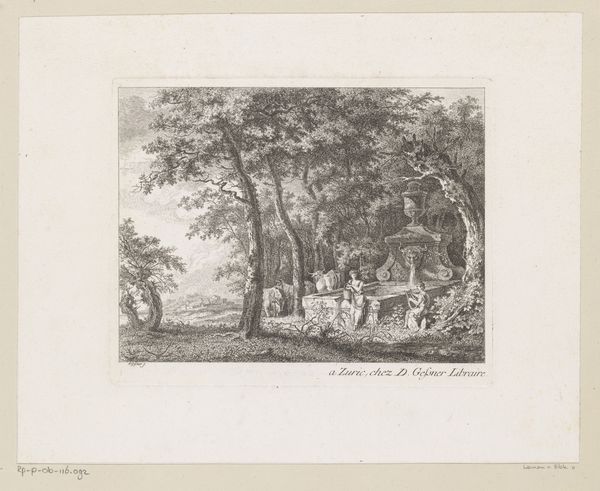
print, engraving
landscape
engraving
realism
Dimensions: height 276 mm, width 359 mm
Copyright: Rijks Museum: Open Domain
William Unger made this landscape scene with Rudolf von Habsburg using etching, a printmaking technique with a long history. The crisp, clear lines that define the figures and landscape were achieved by drawing through a waxy, protective layer on a metal plate, then immersing the plate in acid. The acid bites into the exposed metal, creating incised lines that hold ink. Unger then wiped ink across the entire surface of the plate, forcing it into the etched lines. The surface was carefully wiped clean, and finally, the plate was pressed onto paper, transferring the ink and creating the print you see here. Printmaking was a crucial technology for disseminating images widely, and the level of detail Unger achieved speaks to the skill involved. This etching demonstrates how a traditional craft can translate historical narratives into accessible visual form, blurring the line between reproduction and art. It shows how the careful manipulation of materials and process results in an artwork that is both technically impressive and culturally significant.
Comments
No comments
Be the first to comment and join the conversation on the ultimate creative platform.
